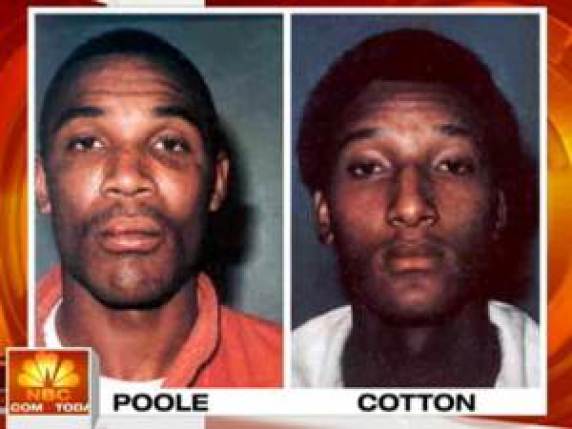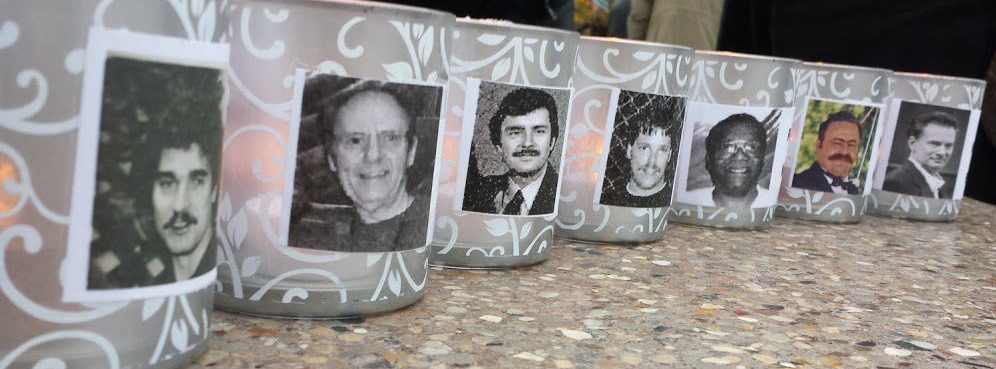Timothy James McVeigh (April 23, 1968 – June 11, 2001) was a Persian Gulf War veteran and an American terrorist who detonated a truck bomb in front of the Alfred P. Murrah Federal building in Oklahoma City on April 19, 1995. Commonly referred to as the Oklahoma City bombing, the attack killed 168 people and injured over 600. According to the United States Government, it was the deadliest act of terrorism within the United States prior to the 9/11 attacks, and remains the most significant act of domestic terrorism in United States history. — From Wikipedia, the free encyclopedia
No words properly describe this egregious act. It’s a tragedy that infuriated an entire nation. Did they find the right perpetrator/s? I believe so. I also believe if you ask anyone in the US you’d get the same answer. The reason we can be sure is because what led to the arrest and eventual convictions was not reliant solely on a single piece of evidence. The investigation went much further and produced tangible proof verifying guilt beyond a reasonable doubt. Imagine this happening for every case.
After the Oklahoma City bombing, an artistic sketch of the bomber appeared on the news. It was shocking to me because of who I thought it looked like. Although there was certainty that the image did not depict this person, it was unsettling. It caused me to consider the implications had this person been in Oklahoma City at that time. Having only delved into the world of wrongful convictions in the past six years, this question haunts me to this day. I do believe the significance of that crime prompted the authorities to make sure they had the right offender but I am all too aware that this is not always the case. Does this mean that getting it right only some of the time is acceptable? Of course not.
I have lost count of how many times I hear people say, “If someone one is arrested, there must be overwhelming evidence to prove they were either involved in the crime or they know something.” I used to believe that too. But I’m more cautious these days. I’ve learned that what causes suspicion can be irrelevant, like innocently walking down the wrong street at the wrong time or wearing the wrong kind of clothing.
Fortunately, through the help of the Innocence Project, DNA testing and other factors, we are seeing less mistakes and a clearer picture of past practices that are flawed. A lack of adequate resources to conduct proper investigations, pressure to make an arrest from both the media and communities, and worst of all, the idea that it is better to convict an innocent person than risk sending a criminal back on the streets has caused a devastating rush to judgement in too many cases. According to the National Registry of Exonerations 33% of the current 1,606 exonerations were caused by mistaken eyewitness identification. In many of those cases this single bit of evidence stood alone as sufficient enough to convict even when other factors surfaced that suggested otherwise.
A good example of what I’m talking about is the story of my friend Jennifer Thompson; a woman who was raped in her apartment in 1984. Jennifer was 100% sure that she had correctly identified her attacker. She was inches from his face during the attack and she had the presence of mind to thoroughly study it. Later, she confidently picked Ronald Cotton out of a series of photos as well as in a physical lineup. She convinced the authorities that he was her attacker. Cotton was the only suspect and his conviction was based solely on Jennifer’s testimony. Later, it turned out not to be him when he was eliminated through DNA testing, which actually pointed to another prison inmate. Unfortunately the wrong man spent eleven years in prison while the guilty man went on to become a serial rapist. He was eventually caught and just happened to be incarcerated in the same prison as Cotton. Not the tidy ending we take comfort in but one that happens more often than we think.
If you look at these photos, you can clearly understand how the mix-up occurred. On the left is Bobby Poole, the actual perpetrator and on the right is Ronald Cotton, the man Jennifer identified. Along with the DNA testing that confirmed Cotton’s innocence, Poole eventually admitted to committing the rape.

Photo courtesy of www.today.com
Here are some basic facts about how lineups are typically conducted and how they are changing. The excerpts are taken from the National Institute of Justice, in an article; Making Eyewitness Identification More Reliable by Beth Schuster:
“The most common procedure is the simultaneous lineup in which witnesses use “relative judgement,” meaning they compare lineup photos to each other, rather than to their memory of the offender. This is a problem when the perpetrator is not present in the lineup because often the witness will choose the lineup member who most closely resembles the perpetrator.”
“Sequential lineups, in which witnesses must make a decision about each photograph or member before moving on to the next, prompts them to use “absolute judgement.” In other words, witnesses compare each photograph or person only to their memory of what the offender looked like.”
“As the body of research into simultaneous versus sequential methods continues to grow, some researchers working in the lab discovered that the double-blind sequential method—in which the administrator does not know the identity of the suspect—produced fewer false identifications than the traditional simultaneous method.”
At the time of the bombing in Oklahoma City, my son Jared was in the military. He was a US Marine stationed at Camp Pendleton in San Diego, CA and preparing for a six-month deployment to Okinawa, Japan. When I saw the drawing on TV it looked so much like Jared. In fact when they finally arrested and charged McVeigh and showed his face on the news, I felt the sketch didn’t look like McVeigh at all.
While working on this blog piece, I consulted Jared and sent the sketch to him. He had never seen it before and was stunned at the resemblance to a photo that was taken of him while in the service. He added that it also looked like most of the guys he served with. I shared my concerns about how our life could have been altered had he been in the area of the bombing and possibly charged. He reassured me by saying, “But it didn’t happen.” He is right. It did not. But what percentage of innocents in our current prison population can take comfort in that fact?
I cannot imagine ever feeling comfortable about making a correct identification if asked to do so. This example confirms my concern. I believe that if I was a witness in Oklahoma back then and had to pick one of the photos below to match the sketch, I might have chosen the photo on the left. What do you think?

Jared Sketch of bomber Timothy McVeigh

First-rate post. Quite sobering. Thank you.
Thank you so much Sue. Makes one think when it hits close to home. Nice to hear from you.
Very powerful Joan, and interesting. Scary.
Thank you Louise. Most do not understand how close we all are to a wrongful conviction or to any tragedy for that matter. My intent of this post is to bring that point home. I can never take for granted how fortunate my family really is. Thanks for reaching out.
Reblogged this on Joan Treppa and commented:
In honor of the twenty-first anniversary of the Oklahoma City Bombing, and an education in wrongful convictions